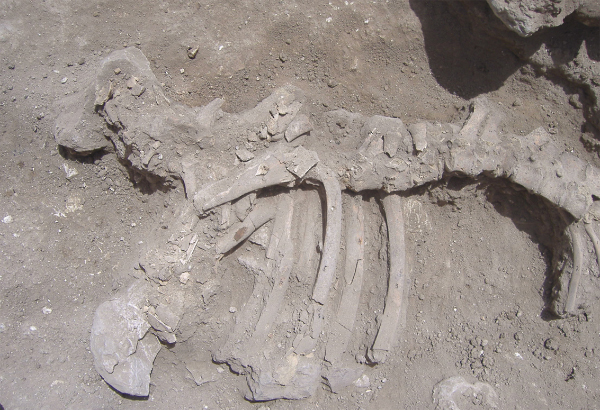God Repays Good and Ill (66:1–6)
Heaven is my throne and the earth is my footstool. Where is the house you will build for me? (66:1). The house of the deity is a temple. Since deities inhabited the cosmos, their earthly residences were only emblematic of their cosmic habitations. Divine houses in Mesopotamia were associated with the cosmic mountain that lay at the center of the universe, providing it orientation: “The great house, it is a mountain great” (see comment on 2:2).1432

Shamash enthroned over heavens
Z. Radovan/www.BibleLandPictures.com
In Egypt, the primeval hill emerging from the waters at creation was the equivalent of this cosmic mountain.1433 Heaven, earth, and even the underworld reach cosmic union in the temple as Esarhaddon describes in a building inscription: “I raised to heaven the head of Esarra, my lord Assur’s dwelling. Above, heavenward, I raised its head, below, in the underworld, I made firm its foundations, Ehursaggula (meaning) House of the Great Mountain.”1434 Enuma Elish also stresses the cosmic earthly tie of the temple when speaking of Marduk’s temple: “He shall make on earth the counterpart of what he brought to pass in heaven.”1435
The tie between the temple and its deity was close, which was a major concern for Israel when Yahweh’s temple was destroyed by the Babylonians in 586 B.C. God chided the returning Israelites for not taking his temple rebuilding seriously after their return to the land under the Persians (e.g., Hag. 1:4–11). In Mesopotamia, if a god’s temple was uninhabitable, it made the god “arise from his seat” in the temple and leave it.1436
The Canaanite gods Yam and Baal also sought a new temple/palace for themselves. The chief god Il commands: “Build a house for Yam, raise up a palace for judge River.”1437 Later Baal complains: “Baal has no house like the gods, nor courtyard like Athirat’s son, dwelling like Il’s,”1438 and he wants this situation put right. Assyrian texts also contained complaints from the gods that their temples were in ruins and needed rebuilding. Cyrus uses this as the excuse to take over their capital from the Babylonians: “The lord of the gods became very angry . . . that the sanctuaries of all of their settlements were in ruins.”1439
My resting place (66:1). This term denotes a place where work and wandering is over, not unlike Marduk resting in the temple after it was built in honor of his newly won primacy over the gods.1440
Their souls delight in their abominations (66:3). In this verse, three acceptable ritual activities—bull, lamb, and grain offerings—are turned on their head, contrasted to unacceptable pagan practices. Killing a man at the least refers to manslaughter, but apparently here refers to human sacrifice, not of a child, but of an adult man (ʾiš). Such sacrifices are rare in Mesopotamia, only found when the consort and retainers were buried as part of the ritual of the substitute king (see sidebar on “Substitutionary Rites” at 53:4).1441 During the First Dynasty in Egypt, a king was joined in his death by a retinue to serve him, though the practice was soon replaced by providing model figures and even representations of them painted on tomb wall.1442

Pig bones unearthed at Tell es-Safi
Joshua Walton, courtesy of the Tell es-Safi excavations
Animals, including puppy dogs (see 56:10–11), were killed to seal a covenant. A letter from Mari concerns making such a covenant: “I went to Ashlakka to ‘kill a donkey’ (i.e., ‘make a covenant’) between the Hanaeans [a West Semitic people1443] and Idamaraz. They brought a puppy and a goat, but I served my lord by not offering the puppy or the goat. The donkey, offspring of a she-ass, I had sacrificed.”1444
Excavations at Tel Haror, just south of Ashkelon, have found puppy burials with the skeletons having broken necks; their significance, while suggestive, is unclear.1445 Puppies also played a role in Hittite ritual.1446 One reads: “When the army is defeated by an enemy, then the following sacrifice is prepared . . . a man, a kid, a puppy-dog, and a suckling pig are cut in half,”1447 combining all three of the sacrificial elements in the Isaiah passage.
Pigs, as unclean animals, were unacceptable for sacrifice in orthodox Israelite worship (see comment on 65:4).1448 A Middle Kingdom coffin text explains how, through a declaration of Re, pork is unclean in Egypt: “That is how the pig became an abomination to the gods.”1449 This attitude was apparently shared by the Phoenicians, whose sites leave no pig remains.1450